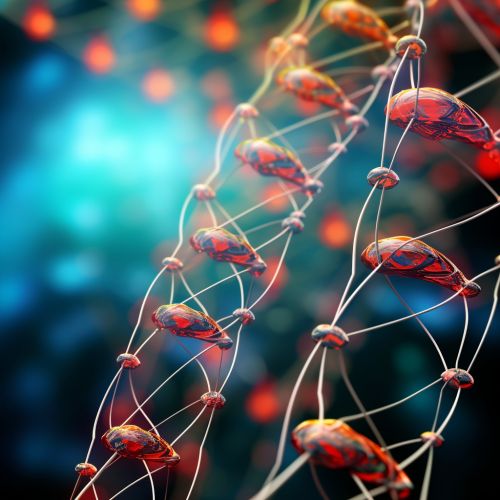Transposons and Genome Dynamics
Introduction
Transposons, also known as jumping genes, are DNA sequences that can change their position within the genome of a single cell. This ability to 'jump' from one location in the genome to another has profound implications for genome dynamics, influencing genetic diversity, evolution, and the onset of various diseases.


Types of Transposons
There are two main types of transposons: Class I (retrotransposons) and Class II (DNA transposons).
Class I: Retrotransposons
Retrotransposons are the most abundant type of transposon in the human genome. They replicate by a 'copy and paste' mechanism, where an RNA intermediate is reverse transcribed into DNA by the enzyme reverse transcriptase and then integrated into a new genomic location.
Class II: DNA Transposons
DNA transposons, on the other hand, move by a 'cut and paste' mechanism, where the transposon is excised from its original location and inserted into a new one. This process is mediated by the enzyme transposase.
Role in Genome Dynamics
Transposons play a crucial role in shaping genome dynamics in several ways:
Genetic Variation
By moving from one location to another, transposons can create genetic variation, which is the raw material for evolution. They can disrupt genes, alter gene expression, or even create entirely new genes.
Evolution
Transposons have been implicated in the evolution of genomes. For example, the expansion and contraction of transposon populations can lead to genome size variation among species. Moreover, transposons can drive the evolution of genes and regulatory networks by providing new genetic material that can be co-opted for novel functions.
Disease
Transposon activity can also lead to disease. For instance, when a transposon inserts itself into a gene, it can disrupt the gene's function and lead to disease. Transposons have been implicated in various diseases, including cancer and neurological disorders.
Regulation of Transposons
Given their potential to cause harm, transposon activity is tightly regulated by the cell. This is achieved through various mechanisms, including DNA methylation, histone modification, and the action of small RNAs.
DNA Methylation
DNA methylation is a key mechanism by which cells silence transposons. By adding a methyl group to the DNA of transposons, cells can prevent their transcription and thus their movement.
Histone Modification
Histone modifications also play a role in transposon regulation. For example, certain modifications can lead to a more compact chromatin structure, making it harder for transposons to access the DNA and move.
Small RNAs
Small RNAs, such as Piwi-interacting RNAs (piRNAs), can also regulate transposons. These small RNAs can guide the cellular machinery to transposons, leading to their silencing.
Future Directions
The study of transposons and their role in genome dynamics is a rapidly evolving field. Future research will likely focus on understanding the precise mechanisms by which transposons influence genome dynamics, as well as developing strategies to harness their activity for therapeutic purposes.
